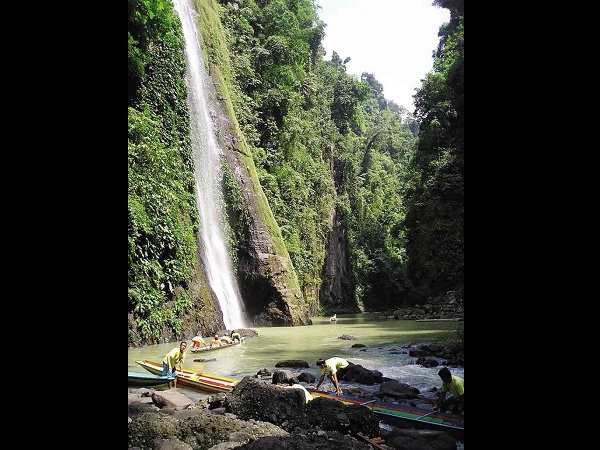A region endowed with natural resources a stone’s throw away south of the nation’s capital could be Calabarzon’s (Cavite, Laguna, Batangas, Rizal and Quezon) best draw for foreign and local tourists.
But a tourism advocate has a different take, saying this could also be a setback for the local tourism industry.
Since Calabarzon is located close to Manila—less than an hour travel time to its outskirts via major expressways—urban dwellers tend to see Calabarzon as a destination only for day trips and quick visits, said Roberto Cereno of the nongovernment Turismo de Los Baños.
As a result, “tourists end up spending the bulk of their time traveling, instead of maximizing their stay in the host town or city,” he said.
Cereno, who is head of a group of local traders promoting tourism in Los Baños, Laguna, suggested “extending vacation” in Calabarzon.
“An opportunity to reach a place is different from an opportunity to experience it,” he said.
Cereno suggested staying overnight or a couple of days so the traveler could experience traditional cuisine and talk to local residents.
“A relaxing vacation is not when one is rushing back to Manila, afraid of getting stuck in heavy traffic,” he said.
‘Satellite destination’
“Calabarzon is the perfect destination for the Manila-based tourist without (having to venture) too far from the national capitol,” according to the website of the Department of Tourism (DOT).
Cecil Aranton of the DOT regional office said the region is Metro Manila’s “satellite destination” not only during summer but all year round.
“There are a lot to do aside from swimming during summer. Tourists can do nature tripping, visit old churches, historic sites and museums along the way and add learning to their tours,” Cereno said.
He said the longer the tourist stays, the more the local economy thrives, helping even the smaller vendors and tour guides.
Beaches, natural springs
A three-hour drive from Makati City brings one to the popular beaches of Calabarzon in the villages of Laiya and Hugom in San Juan, Batangas.
But for those who prefer to travel short and spend less, Rosario town in Cavite boasts of La Isla Bonita in Barangay Silangan 1.
The beach resort, which the local government began promoting in 2011, is now complete with bamboo huts and bamboo beds, charging a minimum entrance fee of P20 for non-Rosario residents.
Beating the summer heat is also done best with a dip in the natural springs and rivers in Cavite.
The Utod River and Falls in Barangay Tua in Magallanes offers activities for swimming, trekking and boat rafting, while the Ilog Siloy in Barangay Carasuchi in Indang is a “virgin spring” being developed into a resort complex, said Rosanni Sarile.
Sarile of Cavite’s Historical Sites and Museums under the Cavite Tourism Office said favorite venues for team building include Camp Benjamin in Alfonso town and the retreat houses in Tagaytay City, which offer a respite from the scorching summer heat.
Tourists can also visit the Ilog Maria Honeybee Farm or learn pottery at the Cornerstone Pottery Farm, both in Silang town, while another recently opened amenity is the paragliding facility in Barangay Lantic in Carmona town.
“We saw Cavite’s potential. Now with the Cavitex (Manila-Cavite Expressway) we are just a 10- to 15-minute drive from the international airport,” she said.
Laguna province, on the other hand, has long been known for the long line of public and private resorts in Barangay Pansol and Bucal in Calamba City.
Calamba’s neighboring town—Los Baños—is home to natural hot springs at the foot of the mystical Mt. Makiling volcano.
“The best time to relax in a thermal bath during summer is at night, probably after a day hike to the mountain,” Cereno said.
The more adventurous can travel further down south and experience shooting the rapids of Pagsanjan River in Pagsanjan town and river tubing in Ambon-ambon falls in Pangil town.
An ecopark tour in Pangil (pronounced pang-gil, derived from the town’s old name) includes a bamboo raft ride, a kilometer trek, and a 300-meter downstream water tubing for a minimum fee of P132.
Ray Diaz from the municipal tourism office said Pangil, located in Laguna’s 4th district, is accessible via the Antipolo-Tanay-Pililla road.
In Quezon, the Villa Escudero plantation and resort offers lunch right near the running water of the Labasin Falls, while artist Ugu Bigyan offers ceramic workshop at his garden and pottery shop. Both are located in Tiaong town.
In Batangas, are the first-class Mount Malarayat Golf and Country Club and The Farm in San Benito, a medical and wellness resort, both in Lipa City.
Planning ahead
Calabarzon is one of the most populous regions with 12.61 million residents. In 2011, the DOT recorded 3.6 million foreign and domestic arrivals in the region.
“Traffic (congestion) is a problem that is already there. But the best way to avoid it is to plan your vacation ahead,” Cereno said.
The most common chokepoints in the south are the Aguinaldo highway in Cavite and the Calamba-Los Baños road in Laguna.
Cereno said with available computer applications and local government websites, a tourist could find alternate routes to reach his destination.
“If the tourist knows where he is headed, he can avoid the hassle of stopping by and asking for directions. This will minimize road accidents and traffic (congestion),” he said.
Planning ahead also allows tourists to save enough money for a longer vacation and create an itinerary without missing historic sites along the way.
